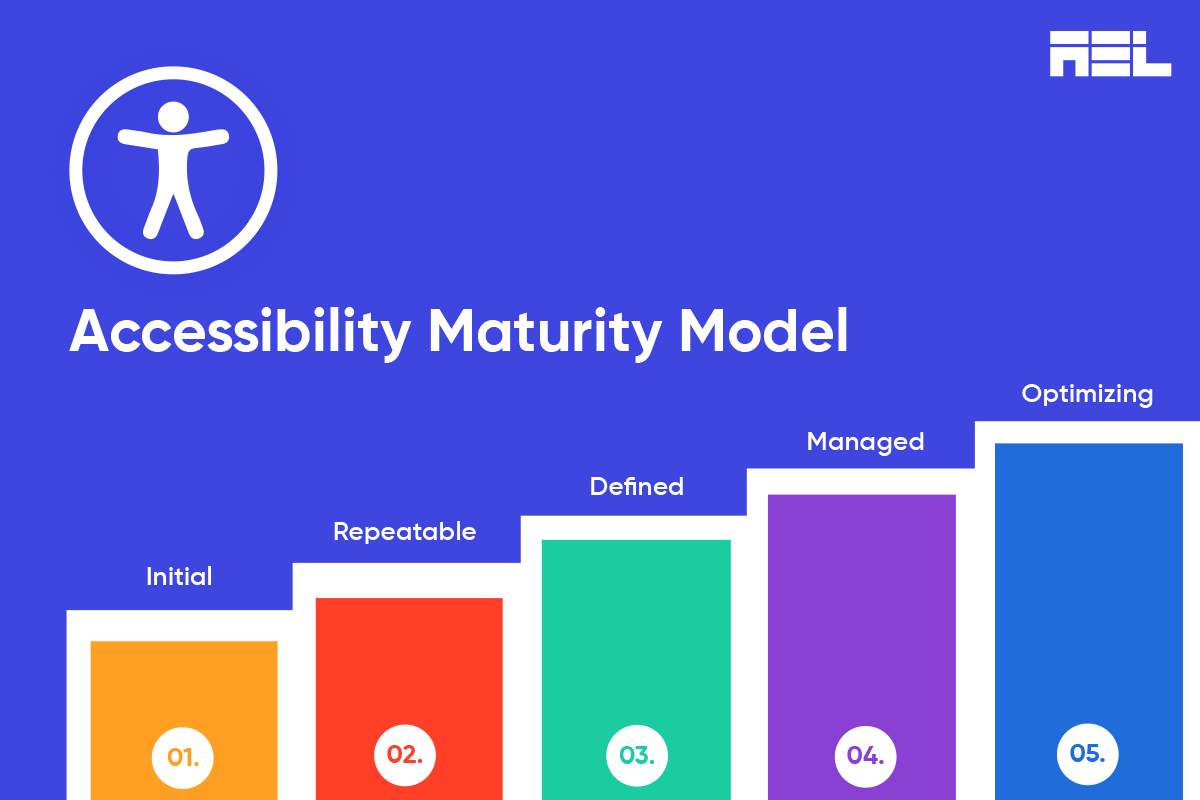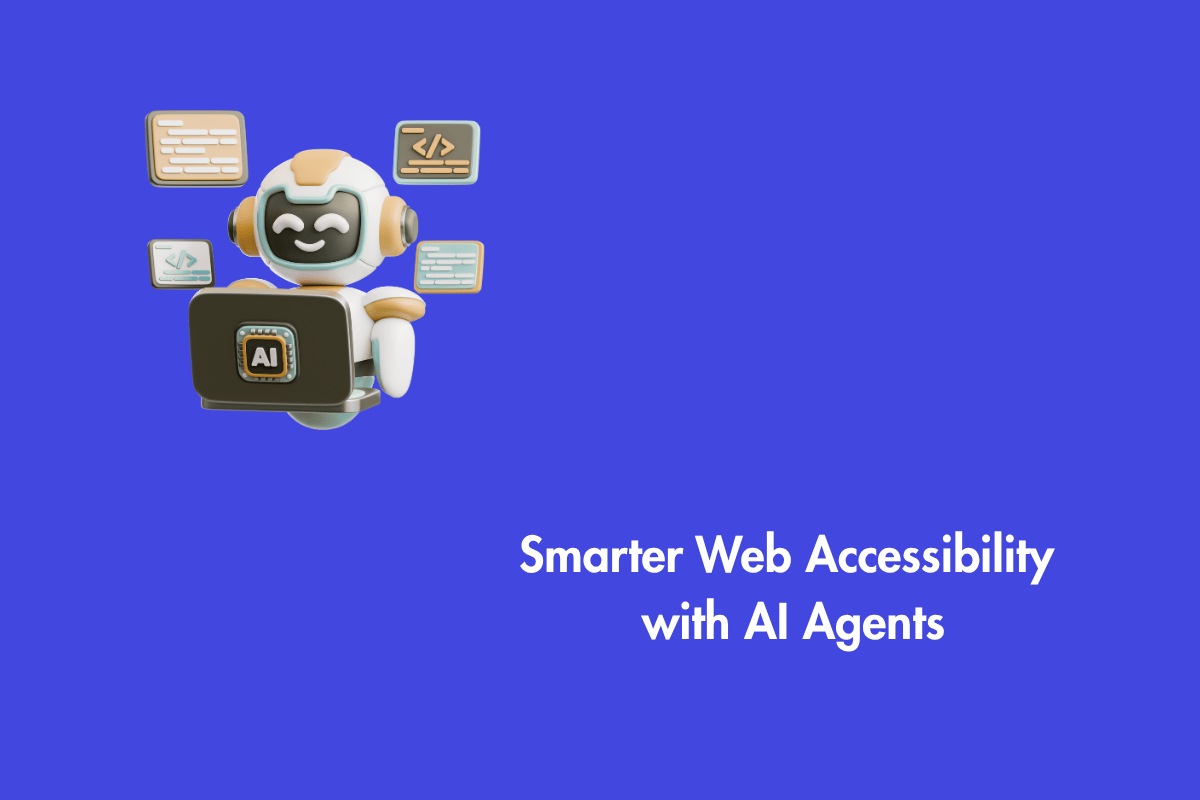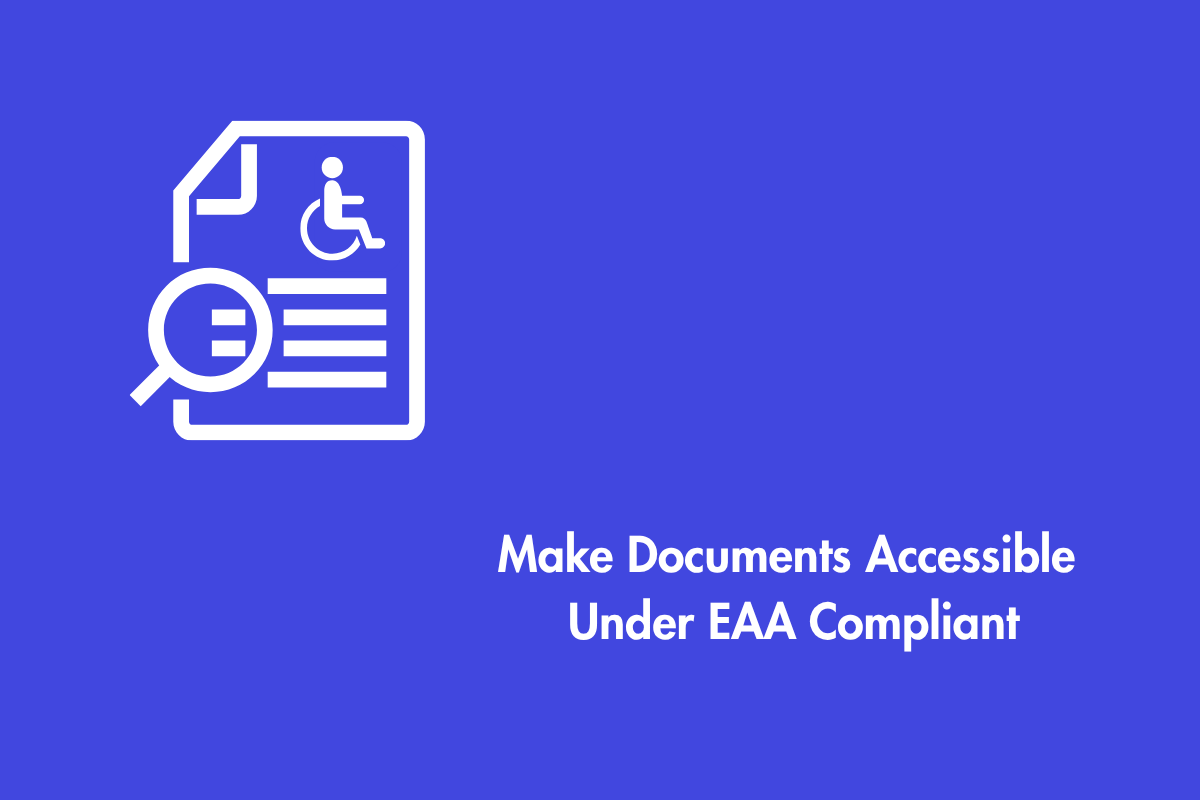Maturity modeling helps organizations figure out how good they are at making things that everyone, including people with disabilities, can use for a long time.
When we assess maturity in terms of accessibility, we get a complete view of how well we’re doing with accessibility. We see where we’re doing well and where we can make things better for everyone.
Ensuring product accessibility goes beyond simply making the product itself accessible. It’s equally crucial to guarantee that the entire user experience associated with that product is also accessible. Furthermore, we need to establish a clear and sustainable approach to achieving this accessibility repeatedly and consistently.
To make sure things stay accessible, we need processes and systems that can check if we’re doing the right things to keep the product accessible.
Table of Contents
- 1 Understanding AMM
- 2 The Evolution of Accessibility Models
- 3 Benefits of Implementing the W3C AMM Approach
- 4 Incorporating Four Levels of Accessibility Maturity
- 5 Unlocking Collective Accessibility Efforts in Your Organization
- 6 Progressing Through W3C AMM’s Accessibility Roadmap
- 7 Shaping the Future with AMM
Understanding AMM
- The W3C Accessibility Maturity Model (AMM) helps organizations evaluate and improve their processes for making digital products that work for people with disabilities.
- Even though the AMM is still being worked on, it’s a helpful resource for anyone wanting to make their products more inclusive.
- It gives organizations a way to see how good they are at accessibility now and where they can get better. It also has indicators to track progress over time.
- There’s a pressing need for organizations to accelerate their journey toward greater accessibility. The user experience (UX) field provides us with a model to follow. Some major tech companies have already excelled in digital accessibility, setting an example for others to follow.
- The initial and most crucial step for any organization is to commit to accessibility, just as Apple has done. Apple’s success story is noteworthy; they’ve integrated accessibility into their business strategy, resulting in products that are beloved by visually impaired users.
- For instance, iPhones have features like VoiceOver, a built-in screen reader that greatly enhances the device’s usability for visually impaired individuals.
- Apple’s approach underscores the importance of embedding accessibility considerations right from the start, ultimately leading to an outstanding user experience for everyone.
What does the Digital Accessibility Maturity Model (DAMM) mean?
- The term DAMM, meaning “Digital Accessibility Maturity Model,” describes a framework that illustrates an organization’s level of maturity, which is defined in terms of digital accessibility.
- In simpler terms, DAMM provides a holistic view of an organization’s overall progress in accessibility. It considers factors like the organization’s culture and practices, in addition to assessing individual digital properties.
- DAMM offers guidance on an organization’s accessibility initiatives at a broader level.
What is the Accessibility Maturity Model (AMM)?
- The Accessibility Maturity Model, often known as AMM, serves as a comprehensive tool to help organizations, regardless of their size, evaluate how well they are performing in terms of crucial commitments related to accessible technology.
- It works hand in hand with the Technology Accessibility Charter, which outlines these essential commitments.
- Incorporating considerations for the accessibility of Information and Communications Technology (ICT) into an organization’s workflow and quality governance can be a complex undertaking.
- While some organizations have individuals or departments dedicated to supporting accessibility, many fail to recognize the importance of ICT accessibility and the need for governance systems to ensure it.
- This oversight can limit their ability to create accessible products, services, and essential components like training and documentation, all of which are crucial for fostering inclusive digital environments.
- Essentially, the AMM functions like a scorecard, enabling organizations to measure their alignment with and progress toward meeting these fundamental accessibility commitments.
The Evolution of Accessibility Models
Maturity models have been in use since the 1980s and generally consist of multiple levels, each representing increasing levels of maturity.
Each level includes a definition, controls, a list of processes, and proof points. Proof points are tangible evidence specific to each dimension that an organization can use to demonstrate its maturity at a particular level.
The proposed W3C Accessibility Maturity Model offers an overarching framework for establishing a robust and repeatable ICT accessibility program while pinpointing areas where an organization can improve. This model serves as a valuable tool that:
- It helps individuals, groups, or organizations assess their accessibility practices.
- Identifies gaps between their current capabilities and the next level of accessibility maturity.
- Encourages a continuous improvement in overall accessibility performance over time.
Benefits of Implementing the W3C AMM Approach
In the context of accessibility, it’s crucial to understand that no single department can bear the sole responsibility for ensuring organizational accessibility.
Achieving accessibility requires a collaborative and coordinated effort across various departments within the organization.
These systems should seamlessly integrate ICT accessibility criteria into policies, critical business processes, the organizational culture, and management structures in a manner that is both consistent and measurable.
Only by doing so can organizations effectively address the complexities associated with maintaining ICT accessibility on an ongoing basis.
Accessibility Conformance Reports (ACR) and Voluntary Product Accessibility Templates (VPATs) typically provide a snapshot assessment of a single version of a product, frozen at a particular point in time.
However, they do not guarantee that the product will remain accessible in later versions, as ACR/VPATs do not assess whether the documented accessibility can be consistently replicated.
To truly gauge how well an organization is faring in terms of product accessibility, it’s essential to look beyond traditional metrics such as audit reports and bug counts.
These metrics reveal the current state but do not provide insights into an organization’s ability to produce accessible products in the long run. To make this determination, examining key corporate processes is critical. Implementing the W3C Accessibility Maturity Model becomes an integral part of a “shift-left” methodology, emphasizing the prevention of problems before they occur, rather than fixing them after the fact.
Incorporating Four Levels of Accessibility Maturity
Advancement through each level in this framework is contingent upon achieving the specified outcomes for that particular dimension (which will be discussed later in this article).
The proof points, once completed, serve as tangible evidence of the efforts invested in attaining the outcomes associated with the compliance maturity assessment stage.
The stages are cumulative, meaning that progression to a higher stage is contingent on first meeting the specific criteria of a lower level.
It’s worth noting that the terminology for these stages aligns with the Policy-Driven Adoption for Accessibility maturity model, a framework currently utilized by some U.S. state and local government agencies.
To provide a structured approach for evaluating an organization’s maturity in addressing a specific need, the stages within this framework can be loosely associated with specific criteria:
Inactive:
- No awareness and recognition of the need.
Launch:
- The need is recognized organization-wide.
- Planning was initiated but activities were not well organized.
Integrate:
- Roadmap in place.
- The overall organizational approach is defined.
- Activities well-organized.
Optimize:
- Incorporated into the whole organization.
- Consistently evaluated.
- Actions taken based on assessment outcomes.
Unlocking Collective Accessibility Efforts in Your Organization
Implementing the maturity model is a collective effort, recognizing that each company has its unique structure and roles. To help you get started and identify the individuals who will assist in achieving the proof points and dimensions; here’s a sample list:
- Identifying Dimension Leaders: It’s crucial to designate a key leader responsible for each dimension, someone who can drive that dimension toward full maturity. This leader may or may not have prior knowledge of digital accessibility.
- Training for Dimension Leaders: If the dimension leader is new to accessibility, they should undergo basic digital accessibility training. A useful resource for this purpose is the free online courses provided by W3C. These courses cover the fundamentals of digital accessibility, its significance, and who benefits from it.
- Formation of Working Groups: If your company can create working groups, this could be an excellent way to foster collaboration in this endeavor. Working groups can bring together individuals with various perspectives and expertise to collectively advance accessibility efforts.
Progressing Through W3C AMM’s Accessibility Roadmap
The W3C Accessibility Maturity Model is currently presented as a narrative with an accompanying spreadsheet tool.
- In this tool, you are asked to assess how well your organization accomplishes the proof points for each dimension, and it provides definitions for the rating levels.
- If a specific proof point does not apply to your organization (for example, it references GDPR compliance, but your organization doesn’t serve European customers), you can mark it as “Not Applicable.”
- The spreadsheet maintains a running total at the top, allowing you to track your progress. Ultimately, when the W3C Accessibility Maturity Model narrative is finalized, there are plans to develop a generic HTML version of this tool that can save your progress.
The model revolves around seven critical dimensions, each with a descriptive name and a plain-language summary of what it covers. Each dimension has two sub-sections:
1. Proof Points:
These are tangible pieces of evidence or measures that demonstrate progress within each dimension. They include a high-level description, and while most deliverables are self-explanatory, some may come with additional information.
- The proof points for each dimension are specific to that dimension and serve as evidence-based, organizational deliverables indicating maturity stage achievement.
- They can be partially completed at the Launch and Integrate stages but must be fully completed for the Optimize stage.
- Maturity stages are reached by fulfilling the defined outcomes for each dimension. While all relevant outcomes should be addressed, not all of them will apply to every organization or situation.
- When an outcome is not applicable, it is marked as “N/A”. For instance, if your organization has no native applications, your accessibility policy need not reference them.
2. Maturity Stages:
These stages provide definitions and expected outcomes to help organizations assess and report on their level of accessibility maturity within a given dimension. The maturity stages indicate what is needed to achieve full maturity in that dimension.
There are seven dimensions of organizational accessibility maturity:
- Communications: Focusing on the accessibility of information and internal/external communications.
- Knowledge and Skills: Addressing ongoing education and outsourcing practices to bridge gaps in accessibility operations.
- Support: Covering the accessibility assistance provided to both internal employees and external customers with disabilities.
- ICT (Information and Communication Technology) Development Life Cycle: Incorporating accessibility considerations into the development processes of web, software, and hardware, from inception to obsolescence.
- Personnel: Encompassing job descriptions, recruitment, and disability-related employee resource groups, which contribute lived-experience perspectives to accessibility efforts.
- Procurement: Concentrating on the strategic process of finding and acquiring accessible products an organization requires.
- Culture: Addressing attitudes, sensitivity, and behaviors surrounding accessibility within the organization, including internal interaction, perception, and decision-making.
Shaping the Future with AMM
- The journey of technology and accessibility has made significant strides since the 90s, but there’s still much ground to cover. The recent pandemic has vividly underscored the critical role of digital accessibility in enabling full participation in the online world.
- It has also accelerated the adoption of technologies centered around accessibility. This emphasizes the remarkable influence that users have in shaping business decisions.
- While legal requirements do create a sense of urgency, it’s ultimately the users who drive the success of products. Their demands for accessibility and active engagement with it will push companies to prioritize accessibility throughout their product development cycles.
- There’s a belief that there is a wealth of collective accessibility knowledge and desire within the industry today. If every team member contributes their part, organizations can elevate themselves to more advanced levels of accessibility maturity.
- It’s crucial to understand that any single individual cannot fully tackle this challenge; success hinges on teamwork and the unwavering commitment of organizations to bring all the necessary pieces together.
Wrapping up
You can trust AEL Data as your trusted accessibility partner to assist with your existing program and steer you toward achievable growth in digital accessibility, all while maintaining a sustainable pace. If you’re interested, please feel free to contact us at info@aeldata.com today.



